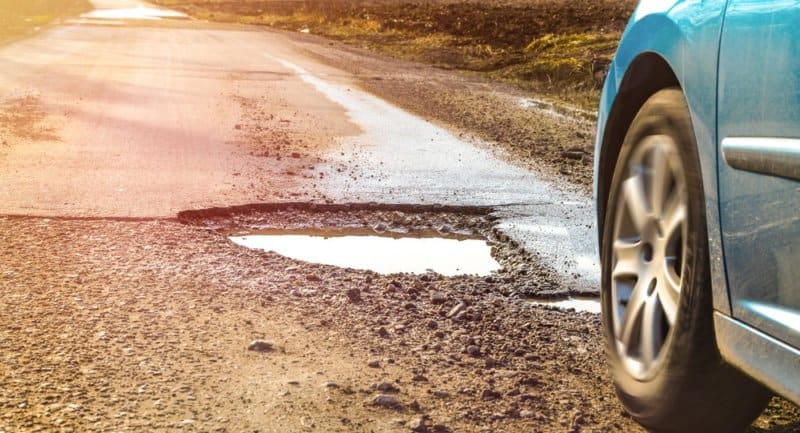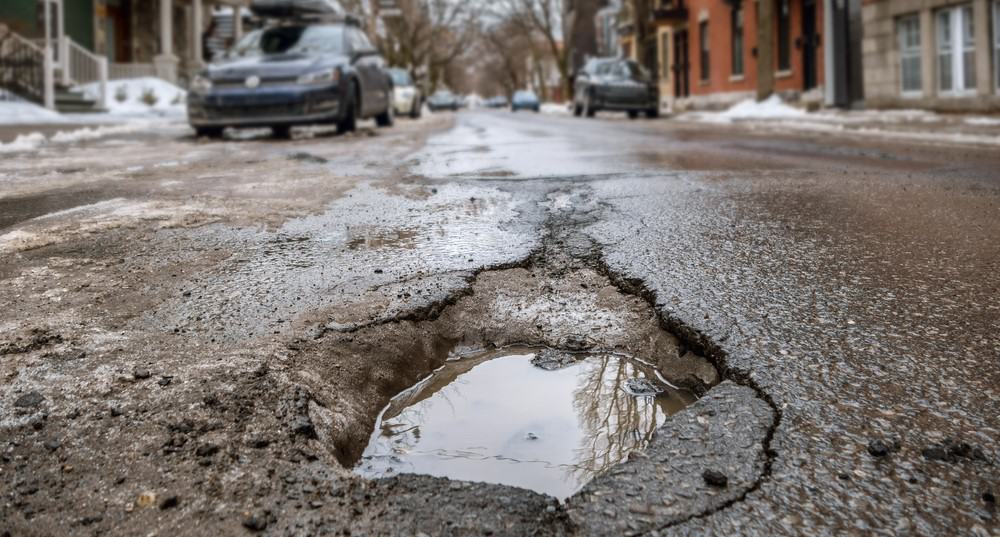Blog
How to Avoid Potholes While Driving

Most people look forward to warmer weather moving in during spring. But the end of icy roads and cold temperatures may also mean one negative thing for streets and highways: potholes.
If you are wondering what causes potholes, you should know that they are the result of snow or rain seeping into the pavement and causing erosion underneath. This can cause weak spots on the roadways, and as cars and trucks continue to drive over them, they can lead to broken cracks and holes, otherwise known as potholes.
What You Can Do to Avoid Potholes While Driving
While potholes can sometimes be unavoidable, it is important to know that there are some tips you can keep in mind to avoid hitting them if possible:
1. Keep a safe distance between other cars. Maintaining space between other drivers makes it easier for you to spot potholes that are up ahead.
2. Avoid puddles when possible. A puddle in the road could be a hiding spot for a pothole.
3. Slow down! It will give you more time to avoid potholes ahead or minimize the damage to your vehicle if you wind up hitting potholes on the road. However, be sure not to slam the brakes right before going over a pothole as it could make the damage worse.
4. Be sure that your tires are appropriately inflated. The recommended tire pressure can be found in your vehicle’s owner manual or the door jam of your car. If your tires are over or underinflated, it can make the damage from the pothole collision worse.
5. Tightly grip your steering wheel when driving over potholes. You don’t want to lose control of your vehicle after hitting a pothole as it could make the damage more significant.
Possible Pothole Car Damage

While potholes can be annoying by creating a bumpy ride, they can also be quite dangerous and may cause significant damage to your vehicle. Some examples of pothole car damage include:
- Flat tires
- Wheel rim damage
- Suspension damage
- Exhaust system damage
- Wear on shocks and struts
How to Determine if Your Car Needs a Repair
Potholes can cause damage, but how do you recognize when your vehicle has been impacted, and a repair is needed? If you experience any of the following situations after hitting a pothole, you should probably bring your car to a mechanic to be checked out.
- Your vehicle begins to ride in a bumpy manner, or you have the feeling that the car is pulling or drifting. This could be a suspension or alignment issue.
- Fluid leaking from underneath your vehicle.
- Your car begins making weird noises. This could be the result of damages to your vehicle’s exhaust system.
- The steering wheel of your car appears off-center.
- Your tires are flat. You never want to continue driving on a flat tire because it could cause more damage to the wheels of your car.
Report Potholes
While you can learn to avoid potholes, it would be better for you and other drivers to have them repaired. You should report potholes to your city, town, or county transportation authorities so they can work on getting them filled.
Damage may be covered by your insurance policy if you have collision coverage. The unfortunate thing is your deductible may be higher than the damage itself, so it may not be worth filing a claim.
If you frequently drive on roads with a lot of potholes, contact your insurance provider to learn more about your coverage options and whether or not you would be protected if you were involved in a pothole accident.
Did you know that Vern Fonk insurance remains open and ready to meet all of your auto insurance needs? Start your free Washington, Oregon, and Idaho car insurance quote online or over the phone today!




